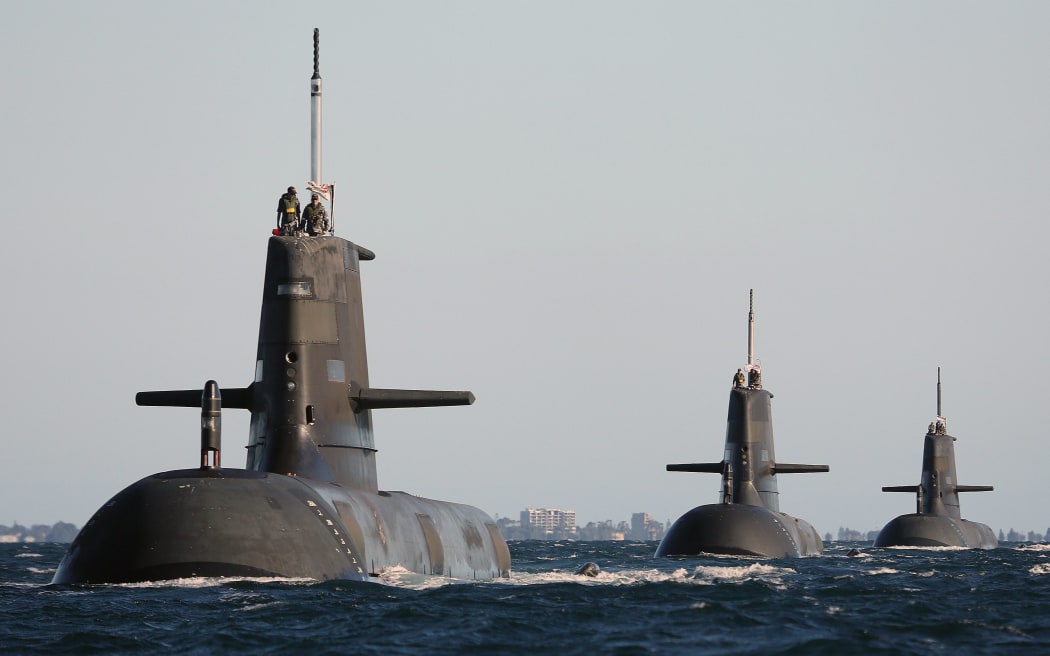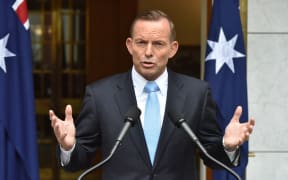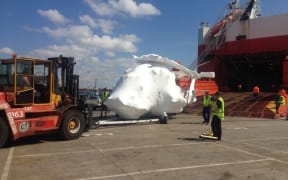Australia plans to increase defence spending by $AU30 billion to $AU195 billion in the next decade.

The White Paper includes an order for 12 new submarines. Photo: AFP / Royal Australian Navy
The 2016 Australian Defence White Paper maps a course to boost weaponry and military forces as Asian nations, particularly China, begin rapid military expansion.
It promises new warships, 12 new submarines, helicopters, armed drones and an increase in military personnel to more than 62,000 - the country's largest in a quarter of a century.
The navy will get nine new anti-submarine warfare frigates and 12 offshore patrol vessels.
The air force will build two fleets of drones, and the army will get armed drones, new protected vehicles to transport troops, helicopters for special forces and a long-range rocket system.
Australian Defence minister Marise Payne said it would be a big increase in defence force numbers, of some 2500 new troops, and 2300 redefined jobs.
The government is aiming to build spending up to 2 per cent of GDP by 2020/21 - earlier than previously promised - representing an overall increase of $29.9 billion.
Defence officials told ABC the White Paper reflected Australia's "growing discomfort" with China's military activity.
Prime Minister Malcolm Turnbull said the Government was committed to the "significant increase in spending" due to regional challenges as well as the threat from climate change and terrorism, among other issues.
"In the next two decades, half the world's submarines and at least half the world's advanced combat aircraft will be operating in the Indo-Pacific region, in our region, and this complicates the outlook for our security and strategic planning," Mr Turnbull said.
"We would be concerned if the competition for influence and the growth in military capability were to lead to instability and threaten Australia's interests, whether in the South China Sea, the Korean peninsula or further afield. We have a strong, vital, vested interest in the maintenance of peace, stability and respect for the rule of law."
The language of the White Paper points to Australia's need to increase the "potency and agility" of its forces in the face of rising wealth and power in Asia, coupled with the strategic tension already arising between China and the United States.
"Territorial disputes … have created uncertainty and tension in our region," it notes.
"Some matters that previous defence white papers have described as long-term issues, such as the impact of modernisation in our region, now fall to this White Paper to respond to.
Australia continues to throw its military lot in with the United States, assessed to "remain the pre-eminent global power over the next two decades".
The White Paper also includes the relocation of a US spy telescope known as an "optical space surveillance telescope" to Exmouth in Western Australia.
The Government would also "de-couple" its spending on the military from the general health of the economy, so that even if growth slowed, defence would still get its 2 percent share.
US Ambassador to Australia John Berry described the White Paper as a "well-considered, comprehensive approach to addressing evolving security challenges of the coming decades".
"As allies, we welcome the government's sustained investment in defence capabilities and readiness and its support for rules-based international order," he said.
- ABC






